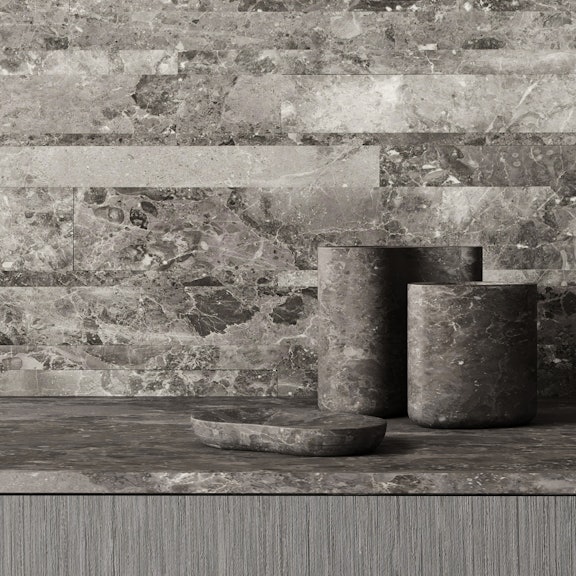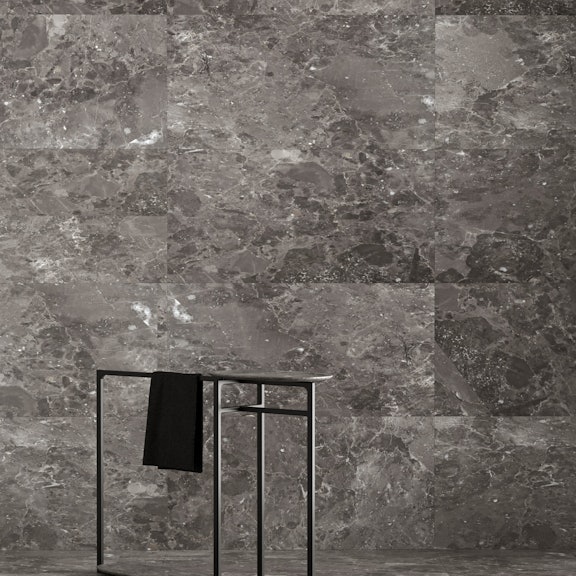Inspiring ideas for decorating with stone from design duo Yabu Pushelberg
03.2022
Following this inspiring example, we asked George Yabu and Glenn Pushelberg for their expert advice on original ways to use natural stone around the home.
Expert advice on original ways to use natural stone around the home
Vintage decor and sustainable design are two of the biggest current trends for the home, but you might not immediately associate them with stone finishes. That’s about to change, however, with the launch of Italian marble specialist Salvatori’s innovative new Lost Stones project. It came about when CEO Gabriele Salvatori noticed some fragmented slabs of old marble – remnants of past projects – lying unused in the brand’s workshop, and was inspired to find a new use for them.
These aren’t just any old marbles: among them are green stones from the same quarry used by Mies van der Rohe for the iconic Barcelona Pavilion, and others left over from building Notre Dame cathedral. Using the ancient Japanese technique of kintsugi – the art of repairing broken objects with veins of golden resin, thereby transforming them into something even more precious and beautiful – Salvatori is bringing this vintage material back to life for floors, walls and furniture.
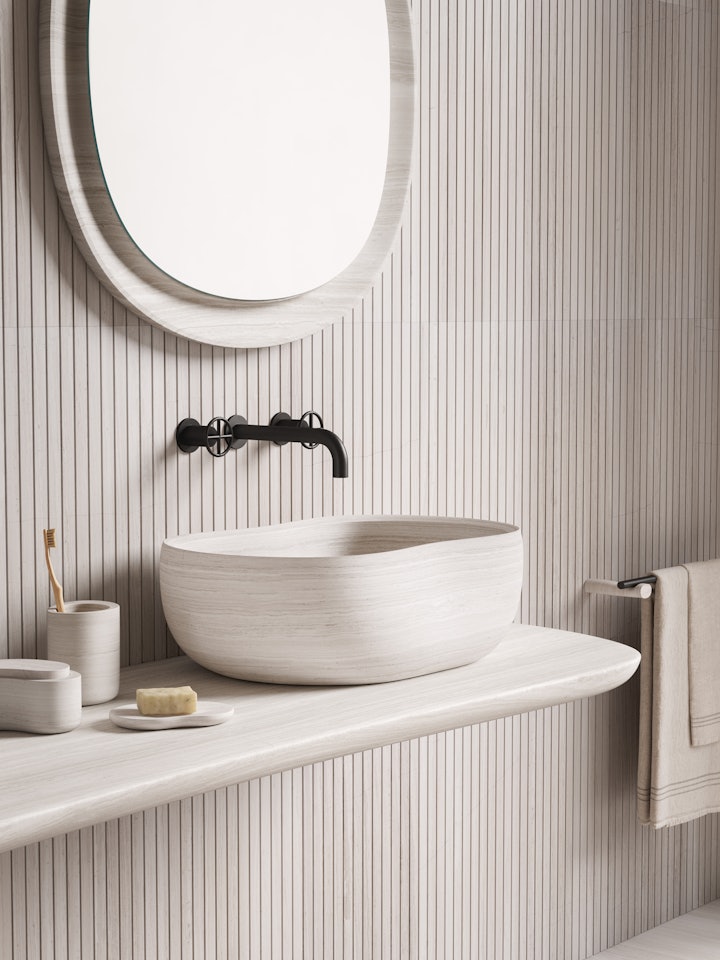
Choose organic shapes
To prevent a room decorated with stone from feeling too cold, introduce curved edges that suggest comfort and warmth. ‘Stone is such a rigid material, so it’s interesting to express its liquidity and softer qualities with amorphic forms, whether it’s a basin, a table or just a vase,’ says Yabu. ‘These transform it into something more expressive than just matter from the ground.’ One example from Salvatori’s Lost Stones collection is the ‘René’ bistrot table, which pairs a round, colourful marble top with a contrasting Bianco Carrara marble base. At home, combine stone walls and floors with rounded mirrors, curved seating and plump textiles to achieve a similar soothing effect.
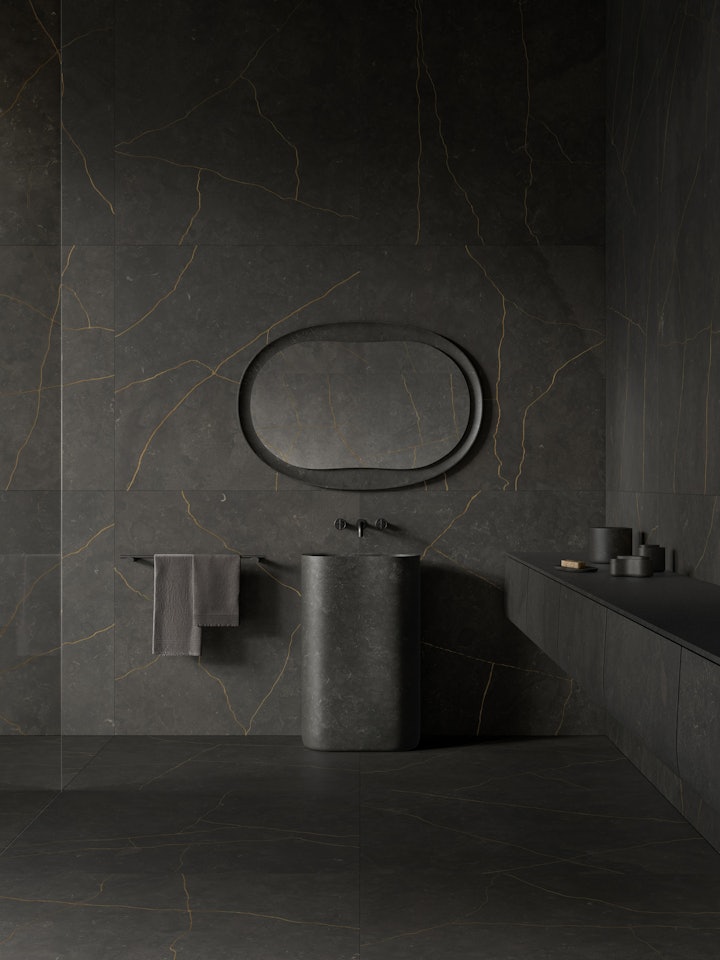
Think outside the grey-and-white box
‘Coloured, exotic marbles are a complete contrast to the white and grey stone you usually expect to find in the home’, says Pushelberg, ‘and an effusive coloured or patterned stone works like an exclamation mark in your interior. It could be used as a feature wall, a kitchen worktop or splashback, or just a vanity unit – be guided on scale by the architecture of the room.’ Stones in interesting shades or with strong vein patterns are especially effective where they come into contact with water, adds the duo. ‘In our design for the spa at the Park Hyatt Shenzen hotel, we used a wavy-patterned amber stone that resembled ripples of water,’ explains Yabu. ‘Dark hues like black and green are also sympatico with water, and look appealing with liquid pooling over them.’
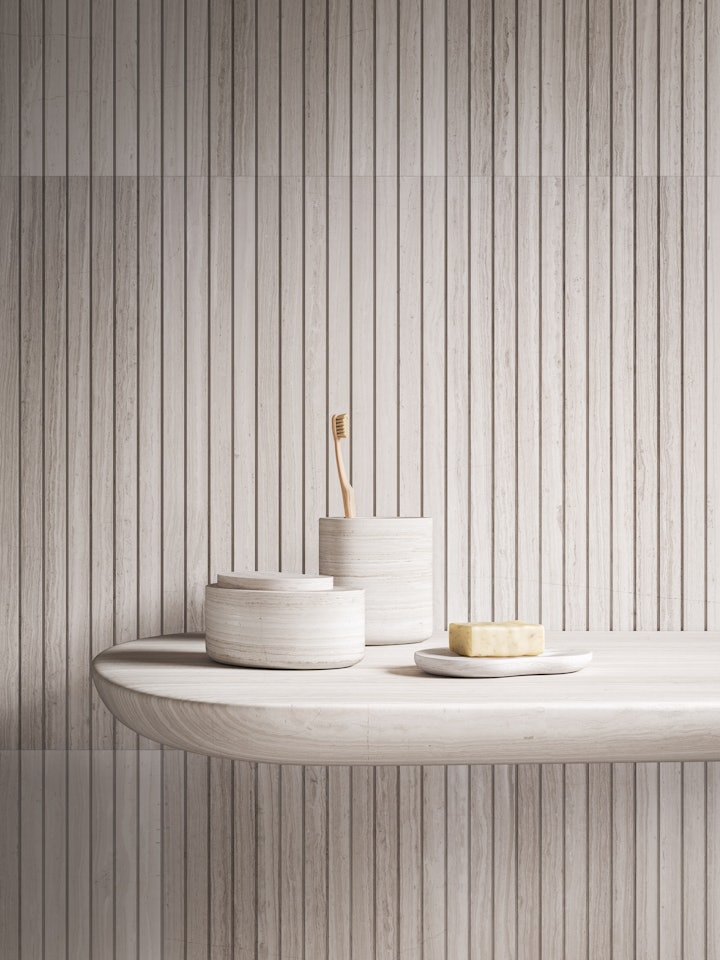
Take inspiration from stone textures
If you prefer a monochromatic or neutral look, texture and tone should be your focus. ‘Sometimes it’s best to make the whole room one tone, which feels serene and calming,’ says Pushelberg. ‘In this instance, you should work with the tactile aspects of stone – perhaps with rough-hewn, carved or ribbed effects that enhance the surface.’ The kintsugi finish in the Lost Stones collection adds a luxurious touch without compromising on the calm feel of natural grey, beige or white stone.
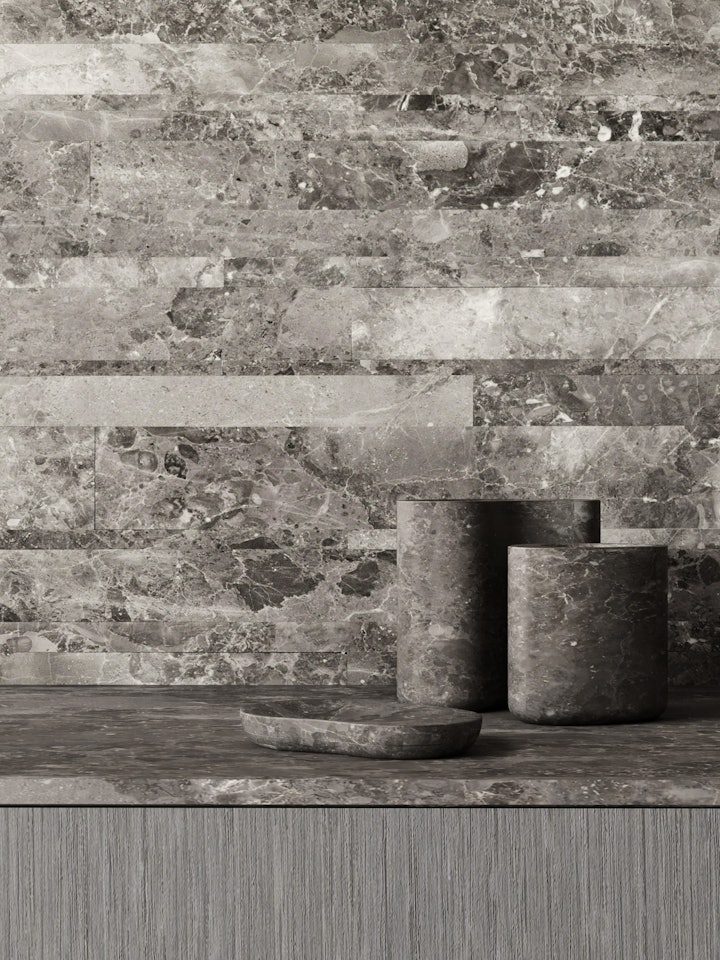
Small touches can make a big impact
Decorating with stone doesn’t have to be a major project involving large expanses on walls and floors. Small details can create just as much drama, says Yabu. ‘Beautiful stone objects such as small containers and pots atop a vanity unit or dining table, or a carved marble stool beside your sofa, add individuality to your space as well as being functional.’ Look for sculptural shapes that draw attention to stone’s precious quality.
For over 70 years, Salvatori has been a benchmark in the natural stone-meets-design field, creating elegant, innovative products in collaboration with designers from around the world who share the brand’s vision and values.
Among the renowned names are American duo Glenn Pushelberg and George Yabu, who designed the Anima collection of bathroom pieces. Stripping stone back to its essence, they reveal and explore its spiritual and sensual qualities through a series of pieces defined by their soft, sinuous curves.
The resulting collection is perfectly in harmony with the Salvatori philosophy of challenging the perception of how stone can be used and transforming this beautiful natural resource into surprising, contemporary objects that exude discreet luxury.
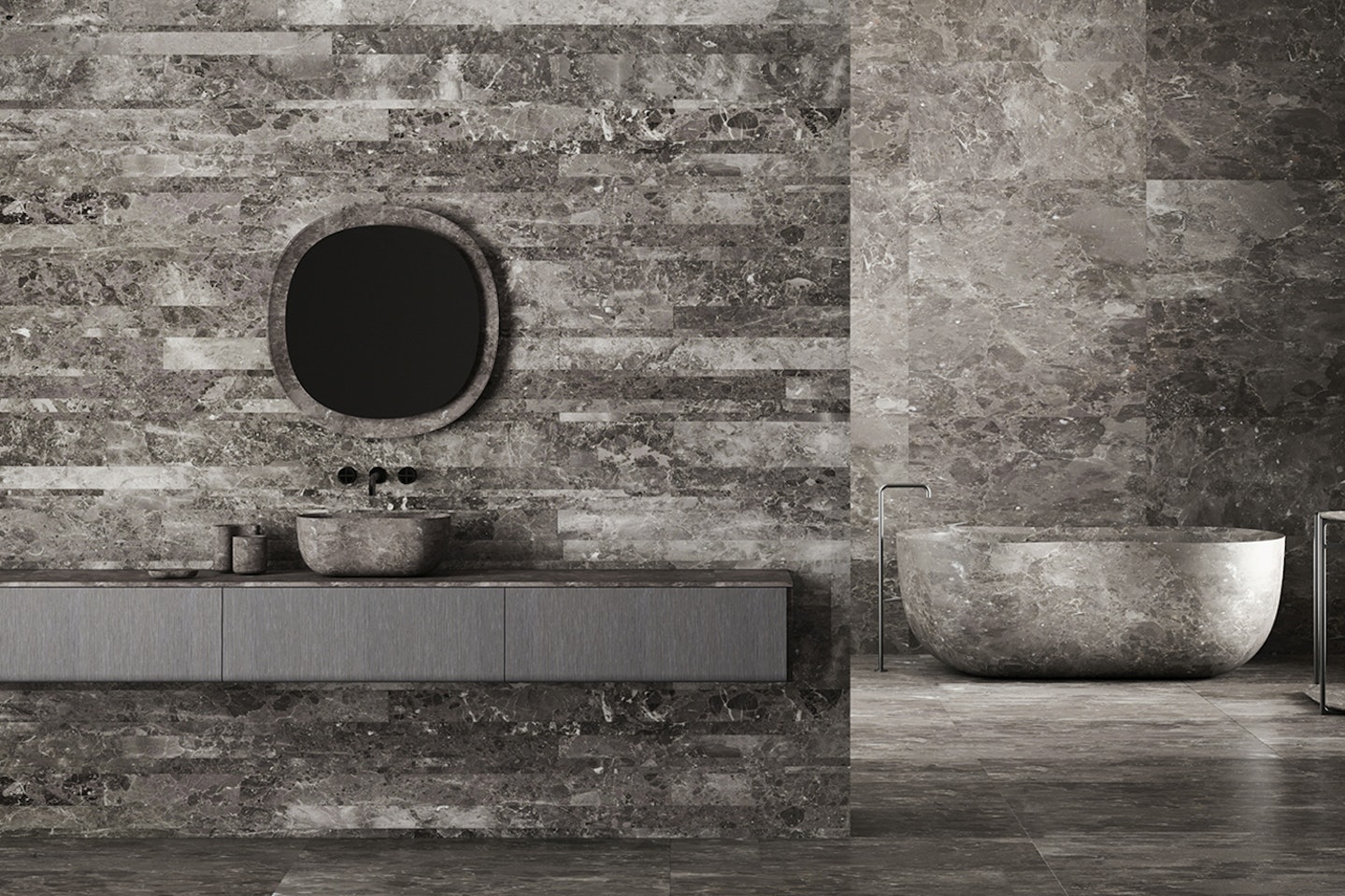
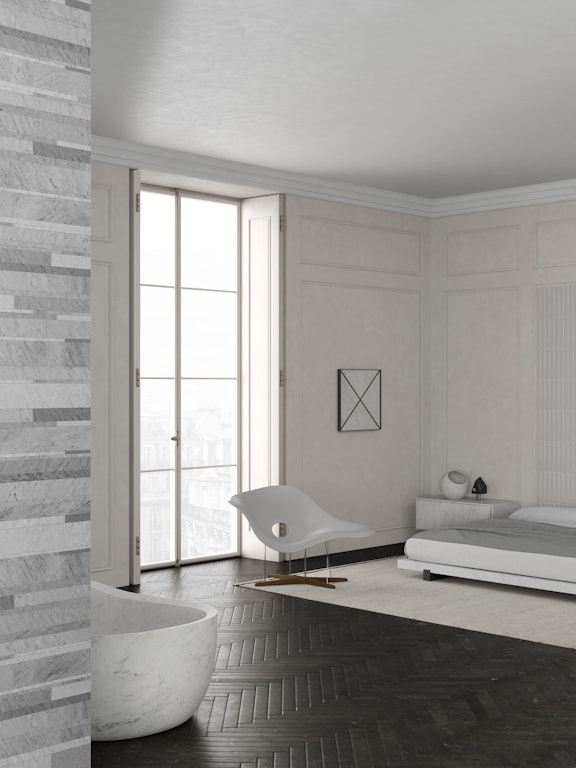
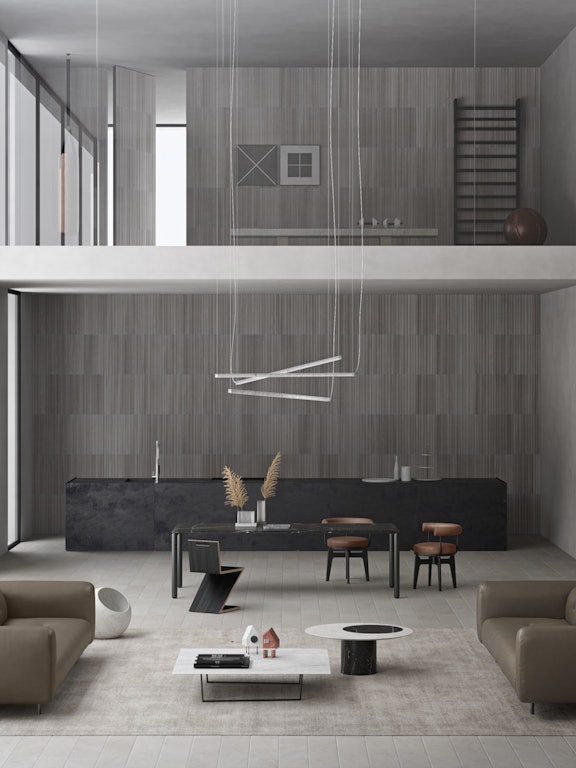
.jpg?fp-x=0.5&fp-y=0.5&auto=format&w=576&h=576&fm=jpeg&q=70&fit=crop)
